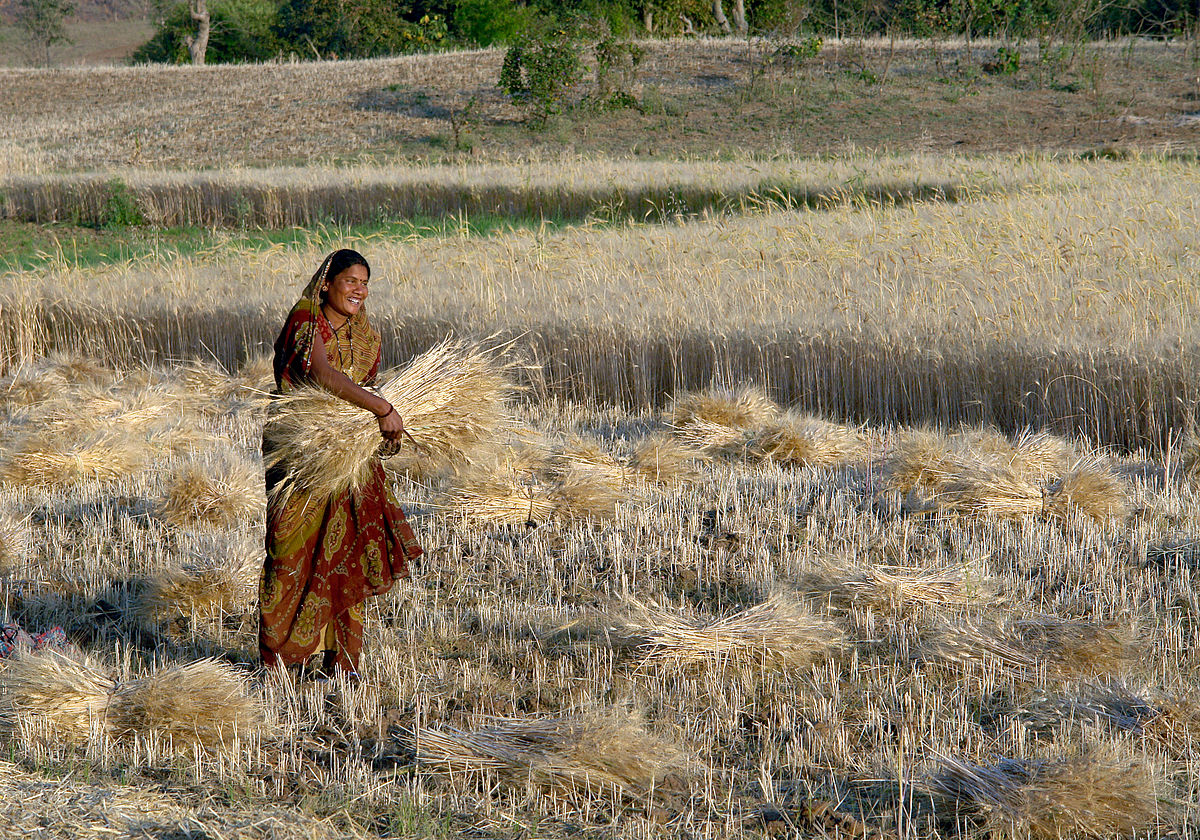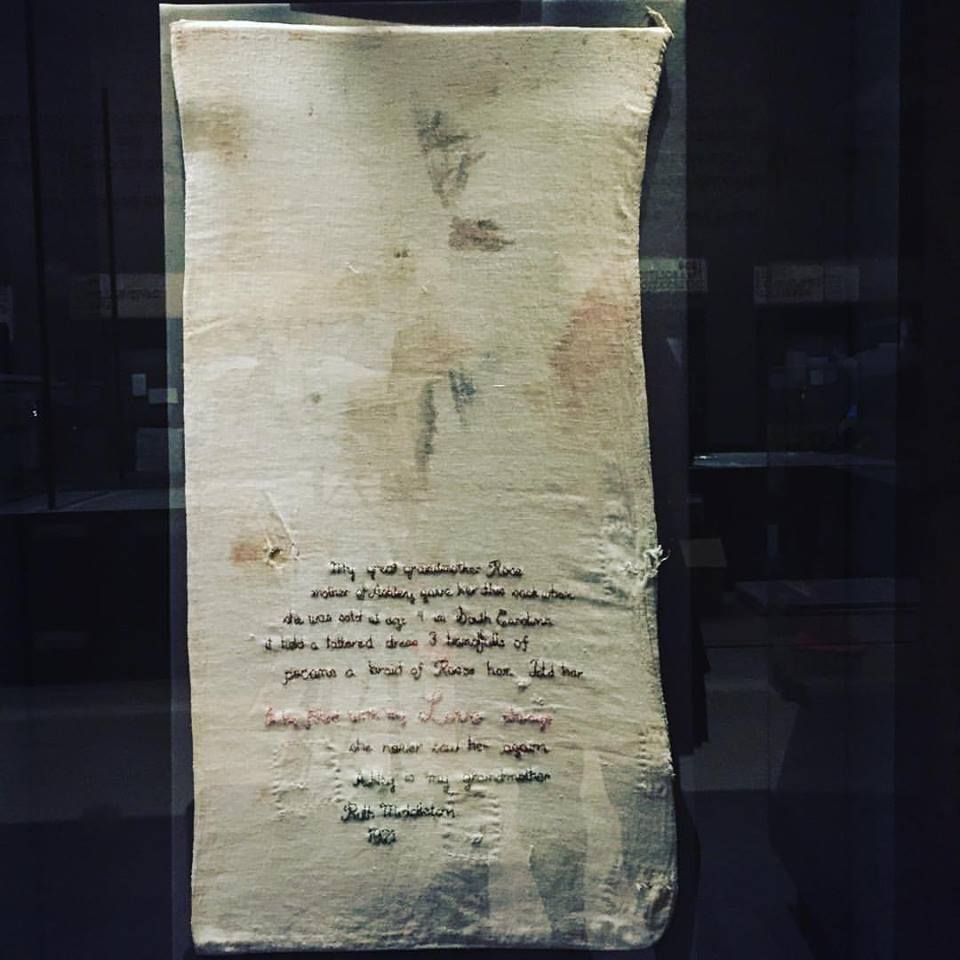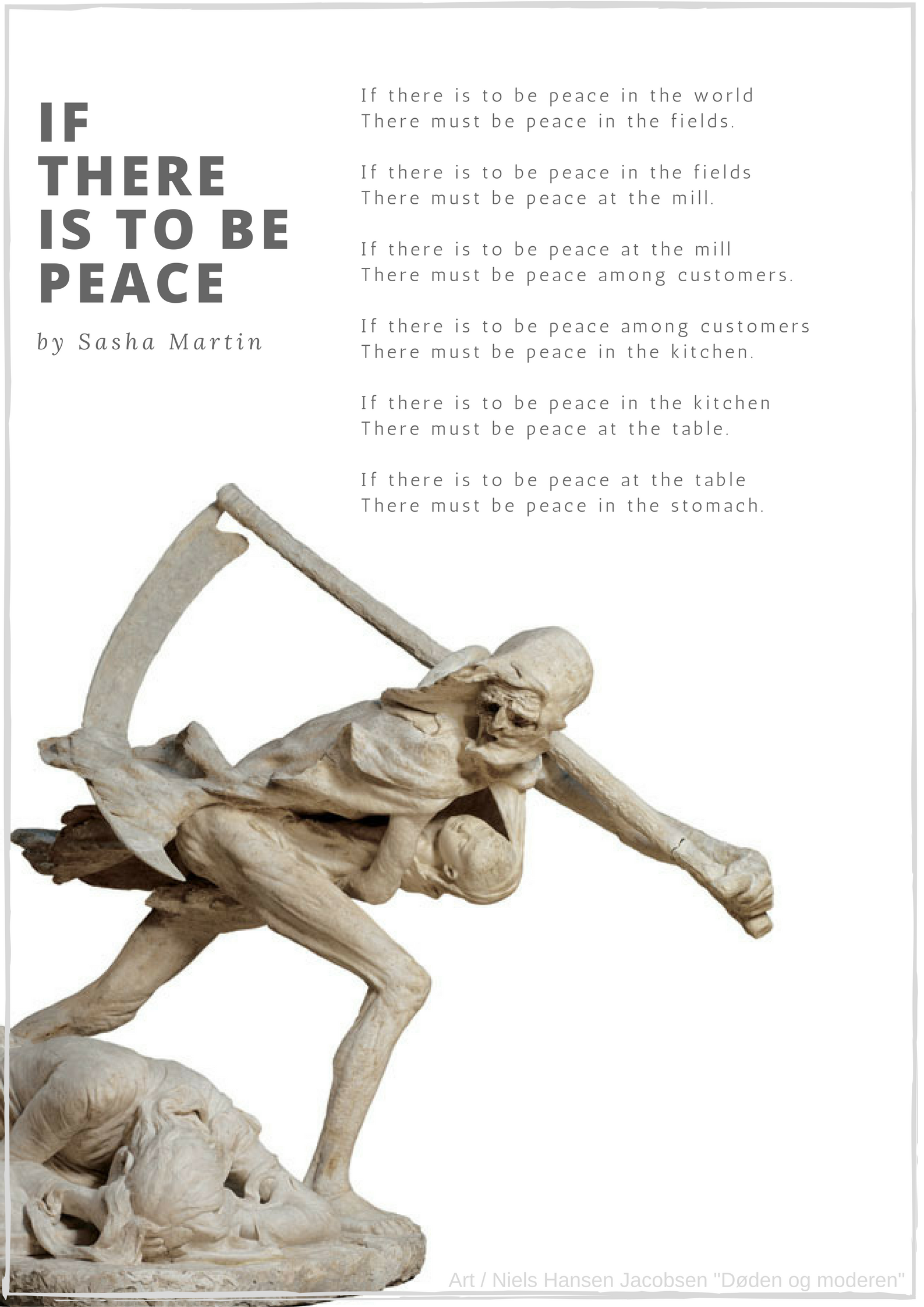What we put on our tables tells a mighty important story.
In my time so far as a Research Fellow at University of Tulsa, I’ve come to appreciate globalization of our food on an entirely new level. Everything is connected – seeds, weather, harvests, shipping, pricing, grocery store availability, history, cooking, healthy digestion. If there is turmoil in just one part of this system? Everything falls out of whack.
Fluctuations in the price of bread have brought about revolt. Even Mr. Death, himself, reflects the importance of the system; he carries a scythe – tool of the harvest.
He is the reaper.
If we are ever to realize peace, it must be from field to stomach.
Our food tells a story, heartbreaking at times. Embroidered in 1929 on the sack above:
My great-grandmother Rose, mother of Ashley, gave her daughter this sack when she was sold at 9 in South Carolina. It held a tattered dress, three handfuls of pecans, a braid of Rose’s hair. Told her ‘It is filled with my love always.’ They never saw each other again. Ashley told this to my grandmother Ruth Middleton.
What wrongs might we right in our lifetimes? What space might we hold for each other?
A meditation on peace
Overwhelmed with the complex food systems around us, I wrote this meditation and poem: “If there is to be peace.” It is based off of the “Prayer for Peace” by Chinese Philosopher Lao-Tse (also Lao-Tzu, 6th-5th c. B.C.). *
*Here is Lao’s original poem:
If there is to be peace in the world,
There must be peace in the nations.
If there is to be peace in the nations,
There must be peace in the cities.
If there is to be peace in the cities,
There must be peace between neighbors.
If there is to be peace among neighbors,
There must be peace in the home.
If there is to be peace in the home,
There must be peace in the heart.
For more of my thoughts on peace at the dinner table, you may read my guest blog on the Oklahoma Center for the Humanities web site.
In peace and love,
Sasha






1 Comment